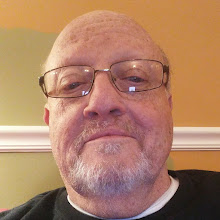Coquina is a form of sedimentary rock, like limestone, that hasn't completely formed yet. It is becoming rock, but it is "young" and the pieces of shell and coral that make up the aggregate in this rock are still visible as, well, pieces of shell and coral. In fact, "coquina" comes from the Spanish word for cockle, or bivalve. The accompanying picture is credited to Mark A. Wilson (Department of Geology, The College of Wooster) and published in Wikipedia.
Coquina is mined along the East Coast of Florida from St. Augustine to Palm Beach. It has been used as a building material for over 400 years. Once mined from the water, it is often left in the sun for up to 3 years to dry and harden. Still it is very soft and was a good material for the walls of forts because it could "absorb" the shock from cannon balls without cracking the entire wall. The cannon ball would just "stick" into the wall and stay there causing very little damage.
The walls of the Fort of San Marcos (Castille de San Marcos) in St. Augustine are made entirely of coquina. As times changed and fewer cannon balls were shot toward Florida, coquina became the material of choice for luxury homes and the fences around these luxurious homes along Florida's East Coast.
Such was the case for a beautiful, walled mansion we used to pass on the way to my orthodontist appointments in Daytona Beach once a month. It turns out that this was the home of exiled Cuban leader, General Fulgencio Batista y Zaldívar. Batista had risen to power in the Cuban government, having started from humble beginnings. Twice he was elected president and ruled as a military leader, a politician, and a dictator. Batista was a friend to the USA and was seen to be a stabilizing force in Cuba. He was also a friend to Meyer Lansky, Lucky Luciano, Vito Genovese and it was in Havana that Frank Sinatra made his singing debut!
During the late 1950's a very charming gentleman came to Central Florida to raise money to build an orphanage in Cuba for the poor children who, because of Batista, were now lacking parents. He hob-nobed with the very elite at the country club, had his picture taken with the rich and famous, and collected buckets-full of money to build this orphanage. His name--Fidel Castro!
On January 1, 1959 the world learned that it was the Cuban Revolution that had been funded by the rich Central Floridians. A revolution that saw the take over of power by Fidel Castro and the exile of Batista. Fifty years later, we see that not much has changed. Cubans are still oppressed and poor and desiring to leave Cuba--and what about that orphanage?
--mak




